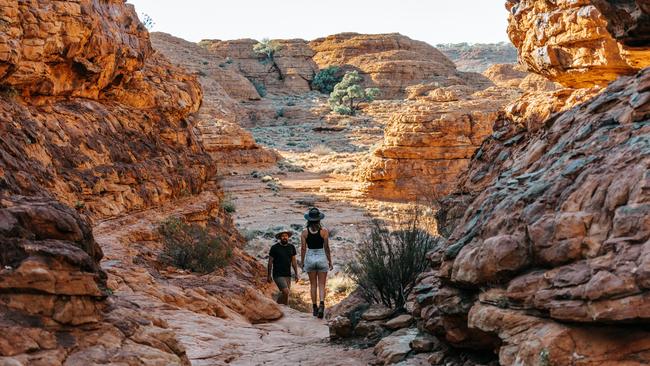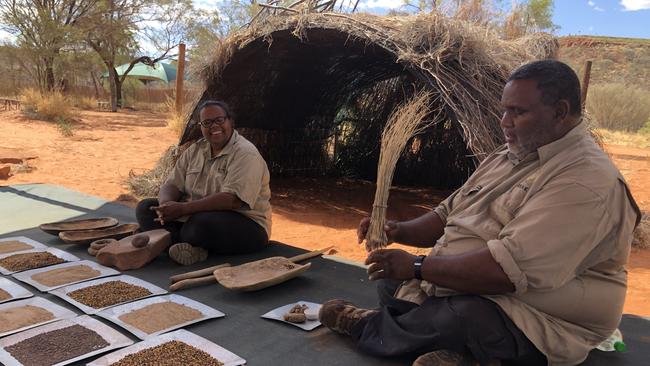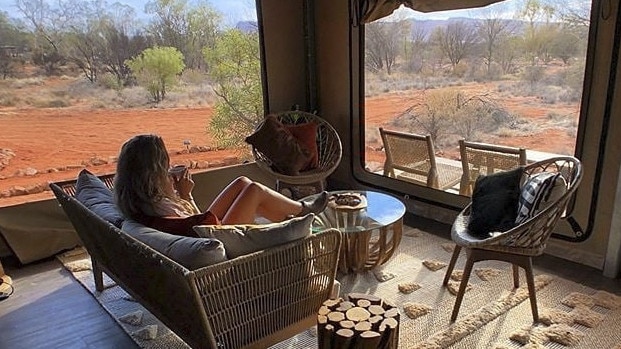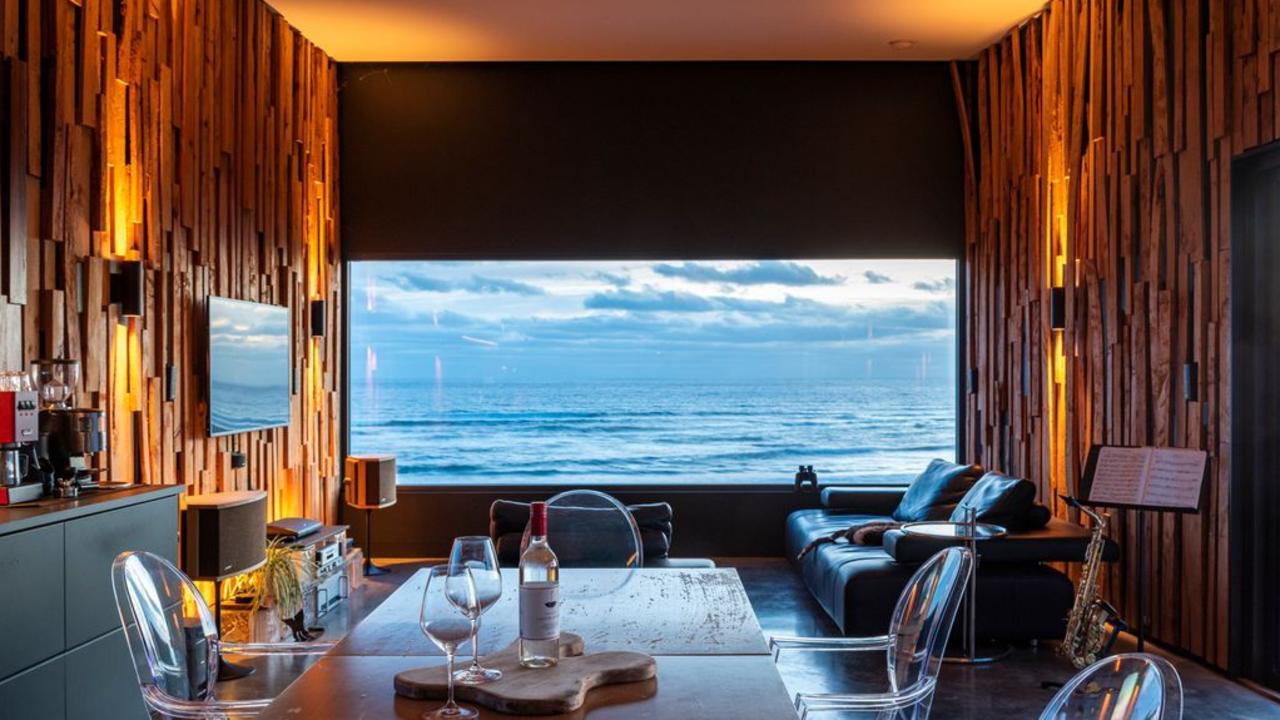Watarrka National Park: a Top End jewel
Kings Canyon is the highlight of any trip to Watarrka National Park. And the view from the top is worth the effort.

It’s mildly disconcerting to arrive at the top of Kings Canyon after traipsing up 500 steep steps, only to be confronted by the sight of a heart defibrillator in a box on a pole. Yet I’m feeling triumphant. The view from this Centralian landmark is a painter’s panorama of soft grey-blue spinifex, pink mulla mulla flowers and the grass plains of Watarrka National Park. I’m also buoyed by the comments of our guide, Chris Rea, as we stand savouring the reward for our ascent. “You’ve just climbed a true canyon,” Rea says. “Whereas America’s Grand Canyon is only a gorge.”
Kings Canyon’s south wall, he explains, was formed by uplift 300 million years ago, creating a fissure that was followed by eons of erosion of sandstone slabs to widen the canyon. The Grand Canyon, carved out by the Colorado River, is a mere infant at 70 million years old.

We’re up early to avoid the heat; you’re not permitted to make the 6km, 3-4-hour Kings Canyon Rim Walk on days forecast to be 36 degrees and over. (The South Wall Return Walk is a shorter option at two hours.) The moderately arduous rim walk leads hikers over natural stone pavements, around tumbled rock and through narrow passages. There’s a surprise around every bend: beehive domes that sit like large ornaments; sturdy timber stairs descending into a palm-shaded Garden of Eden. Film crews have often scrambled to the top; an entire children’s choir poised on rocks for a Qantas ad. And of course there’s Priscilla’s Crack, a stunning rock fissure where the stars of Priscilla, Queen of the Desert posed. But cautionary tales are also embedded in the rock: plaques commemorating hikers who lost their lives taking selfies too close to the edge. Kings Canyon is definitely a place that requires parental vigilance.
We follow Rea down the last easy stretch, past basking lizards and a spotted wren busily gathering insects. Our own breakfast awaits at Kings Canyon Resort, a complex of powered campsites, lodge and resort rooms that reopens in mid-March after a major revamp by new owners Discovery Parks, part of the G’Day Group. At twilight, families and campers drift down to the sunset viewing platform, order a beer or wine and watch the sun’s rays play across the spectacular George Gill Range. It’s pure red centre pleasure.

Our destination next day is the tiny community of Wanmarra, a short drive from the resort. We are on Luritja and Arrernte country, and our hosts on the Karrke Aboriginal Cultural Experience are Peter Abbott and his sister Natasha, who lead us through a series of shadeclothed areas. In the first, they describe the aromatic smoke wafting over us and the native medicinal plants they’ve placed in the fire. “We welcome you with the smoke, if you’re working on our country or just passing through it,” says Peter. On a low table sit plates of bush foods, or mai: quandong, desert raisin, acacia tree sap or bush lolly, and wild fig.

In another shelter, Natasha shows how she makes jewellery using hot wire to pierce seeds, just as her grandmother taught her. “In cool weather you harvest, in summer you thread,” she says. Peter picks up clapping sticks: “The lighter you hold them, the better the sound.” The music lesson gives way to decoration with ochre, smeared in different colours over the back of one’s hand. Peter smooths the sand and with a stick makes concentric circles, the symbol for meeting place, then wavy lines depicting Creation spirits moving, or lightning or rain. Dots represent insects, stars, tracks of animals or trees; half circles mean adults, smaller ones children.
Natasha offers around plump witchetty grubs; I hold one in the palm of my hand, its skin like a silk stocking. She shows us how children are taught to make seedcake out of prickly wattle, one of few edible tree species. Then Peter demonstrates how mulga wood boomerangs in Central Australia are non-returning, yet fly far and swiftly enough to break a kangaroo’s leg mid-hop.
Indigenous cultural experiences can feel superficial; Karrke, by contrast, offers a memorable model, allowing visitors to observe, take photos, ponder and ask questions. And then Peter and Natasha smilingly usher them along. Palya... hello, goodbye, thank you.
Perfect for: Families, nature lovers.
Must do: Start the Kings Canyon Rim Walk early to beat the heat. Make time for the Karrke Aboriginal Cultural Experience (karrke.com.au). Guided walks and other activities including heli-tours can be booked through the resort.
Dining: The resort has a bistro, bar and evening barbecue with live entertainment; the general store (7am-7pm) does takeaway food.
Getting there: Kings Canyon is a 320km drive southwest of Alice Springs. Major roads are sealed.
Bottom line: The resort has powered and unpowered campsites from $50pn. From March 17, stay in a glamping tent ($415), refurbished Lodge Room (from $145) or Resort Room (from $349).
kingscanyonresort.com.au northernterritory.com


